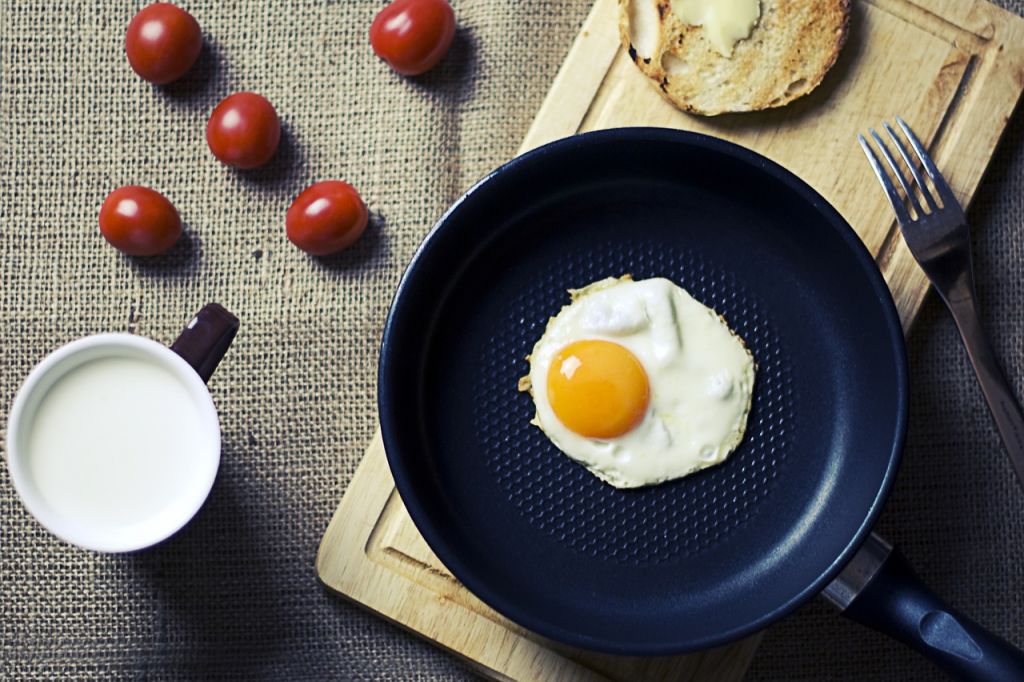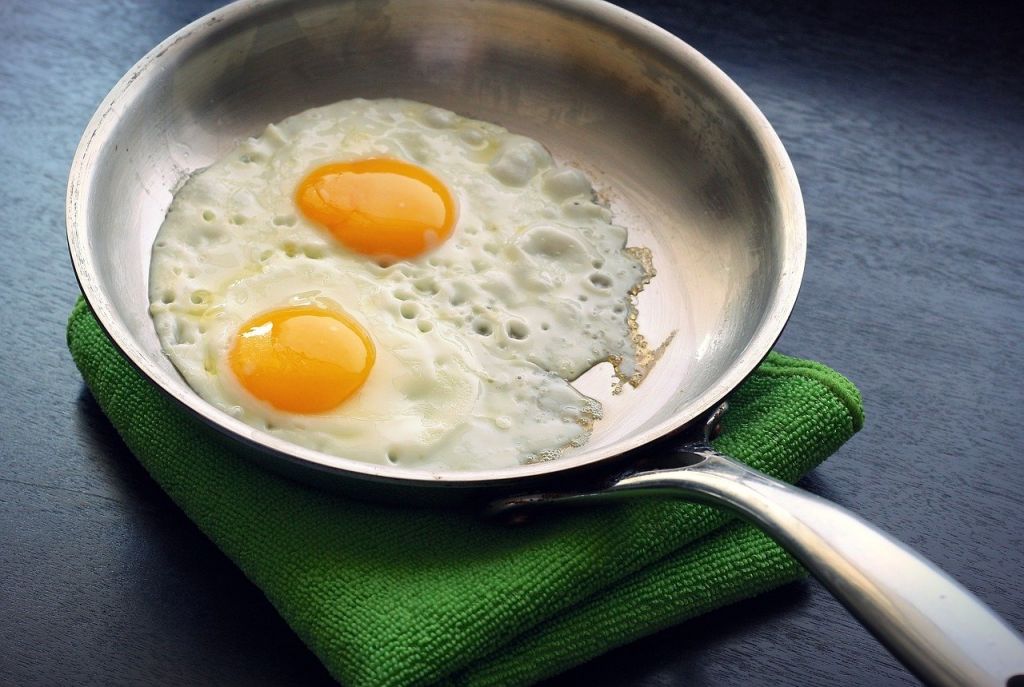In today’s kitchen, you will never miss either a nonstick or stainless steel cookware. These two are in a league of their own when it comes to chef preferences. The allure of pancakes effortlessly gliding off a pan or never spending hours chiseling burnt food from your favorite pot have contributed a great deal to the popularity of the two cookware.
The stainless steel vs nonstick cookware face off is a battle of culinary titans. Whatever the feelings one has towards the other, there is often a low-key acceptance of the flaws and hits of the other. As such, opting between either calls for careful considerations.
Choosing the wrong cookware for your kitchen ends up in frustrations, tough cleaning jobs, costly cookware replacements, and ruined favorite recipes. Thus, it is important to carefully consider the differences between nonstick and stainless steel cookware, for the best cooking.
NONSTICK TEFLON COOKWARE

Teflon is a brand name for a compound called Polytetrafluoroethylene (PTFE). It is the coating used on different types of cookware materials. These includes anodized aluminum, silicone, enameled cast iron, and ceramics.
This coating of Teflon on the materials is the main characteristic of nonstick cookware. Also, the material is slippery, imparting the most critical feature of Teflon cookware. Food does not stick onto the surface, without the application of excess oil.
PROS OF NONSTICK PANS
It is for this reason that nonstick cookware are easy to clean. All you have to do is wipe the interior with paper towel. As a result, nonstick is convenient, saving you lots of energy and valuable time.
Similarly, Teflon nonstick cookware does not require much lard, oil or butter as you make meals. The coating is naturally nonstick. In fact, some food do not require oil at all. What this feature means is that this cookware is healthier than other alternatives in the market.
Moreover, Teflon nonstick is resistant to acidic foods. Foods like tomatoes and wine or any other type of vegetables often eat into metallic surfaces, degrading their quality over time. Thankfully, Teflon coating suffers no such deficiency.
Naturally, nonstick Teflon cookware are lightweight in design, because of how simple they are made. Usually, this is a problem for some chefs, more so if you are used to heavy cookware such as cast iron. It presents a challenge in preheating and setting of the right cooking temperatures.
Still, you can find relatively heavy nonstick cookware. These are for professional chefs since they can be a handful to handle. Holding every factor constant, a nonstick cookware will be cheaper than a stainless steel cookware. However, you can expect to find costlier, high end Teflon nonstick pans and pots.
Preparing foods such as poached eggs, omelets, pancakes grilled cheese, and fish, a unique challenge is presented to you. These foods stick to the cooking surfaces, unless either cooking oil is added, or the pans are preheated.
Here is the good news. Nonstick pans do not require preheating. In fact, preheating the pans leads to one of the famous drawbacks associated with this type of cookware. So, you have an easy to use, straightforward cookware. Also, nonstick is perfect for sautéing meat and mushroom.
CONS OF NONSTICK PANS
One of the drawbacks of nonstick cookware is that they are not suited for deglazing. That’s why most cooks prefer to make sauces on stainless steel pans. With a nonstick, the juices released when making pan sauces and gravy do not stick to the pan, making it impossible to deglaze with a desired liquid. This is one of the areas where stainless steel reigns supreme.
That being said, most people fear the possibility of the Teflon coating getting scratched during cooking and ending up in the food. However, both the FDA and EPA insists that that Teflon particles are not harmful, just as iron leaching from cast iron pans.
There is no possibility of making crisp, browned, and golden meals on a nonstick pan. The temperatures and cooking periods required for this type of cooking aren’t ideal for a nonstick pan. One of the weak points is the coating, which degrades at high temperatures.
One of the biggest challenges of nonstick pans is the inability to use metallic utensils. The fear is that these will scratch the Teflon delicate coating. Therefore, you should only use either silicon or wooden utensils when cooking. Metallic spoons, folks, and spatulas scratch the coating, making the pans nonstick no more.
Still, the smell emanating from an overheated nonstick pan isn’t appetizing at all. And so is the prospect of coming across a Teflon flake mid-bite of a tasty meal you just whipped up.
STAINLESS STEEL COOKWARE

Is stainless steel non stick? This is the first question prospective buyers ask about stainless steel cookware. Stainless steel cookware are the preferred choice for professional chefs. It is no wonder those celebrity shows are filled with glistering stainless steel cookware.
Stainless steel features an absolutely no nonstick element. However, when preheated and the right amount of cooking oil added, these cookware becomes nonstick. It is mastering this trick that’s the hardest part of using these types of cookware.
Stainless steel cookware are made form a combination of different materials, each with a purpose. On its own, the metal is erratic, non-durable, and conducts heat unevenly. Therefore, it is combined with copper, aluminum, chromium, vanadium, titanium, nickel, iron, and carbon to produce the best performing cookware for high temperature cooking.
PROS OF STAINLESS STEEL COOKWARE
Whereas a stainless steel cookware comprises of several layers of metals, usually up to 5-ply construction, only stainless steel gets into contact with food. Stainless steel is inert and unreactive with any food, whether acidic.
This makes stainless non-toxic and inert, perfect for all cooking jobs. Moreover, stainless steel is more durable than nonstick, go into ovens, and withstand high temperature cooking. Addition a proper amount of oil, lard, or butter allows an experienced cook crisp, sear, and brown in stainless steel with relative ease.
The left over tidbits from browning make for an unrivalled pan sauces when deglazed by broth, water, or wine. This feature gives you almost all the reasons to prefer a stainless steel cookware.
When selecting a stainless steel pan, the weight matters a great deal. There is a simple rule to follow: the heavier the pan, the better the performer. A skillet and pot that’s heavy ensures even distribution and retention of heat.
Stainless steel pots are the best for boiling bisques, stews, and soups. At no point will you make vegetable stew in a pot and it won’t taste delicious. So, both nonstick and stainless steel are nonstick. The only difference is that stainless steel has to be preheated first, then then the food is added.
CONS OF STAINLESS STEEL
You need oil when using stainless steel. Some people find this a turn off, preferring to cook food in their natural juices. As such, these cookware do not go well with people opposed to butter in their food.
Stainless steel has a shiny surface that becomes discolored and spotted with each cooking round. It is one nuisance that you have to deal with in order to retain the shiny appearance. It is often frustrating keeping them looking beautiful.
Tap water with high calcium amounts tamper with the lustrous look. Generally, stainless steel is a costlier investment than nonstick.
CONCLUSION
Both nonstick and stainless steel cookware have their purposes. As such, both deserve to be part of your kitchen cookware collection. Some foods are better prepared on a stainless steel, while others create better results in nonstick.
In this way, you can use the nonstick for your delicate fish, eggs, and crepes, while the stainless steel for everything else.